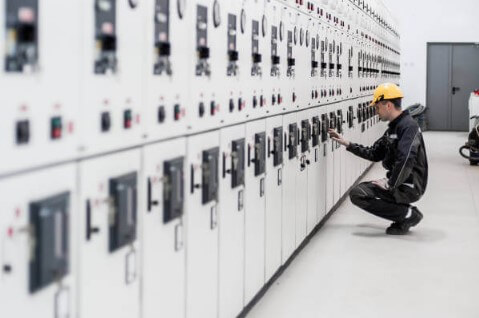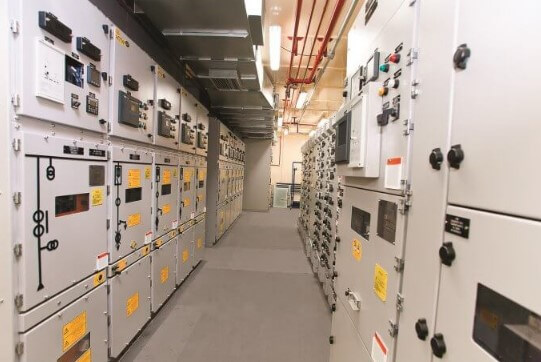In the world of high-voltage power applications, precision and accuracy are paramount. These critical factors can make or break the performance of sensitive equipment and processes. This article delves deeper into the importance of precision and accuracy, highlights their differences, and explores how to achieve them in high-voltage power supplies. Additionally, it underscores the advantages of opting for pre-certified power supplies.

GET IN TOUCH
The ultimate solution for reliable power control! call us at 276-285-3841
Accuracy vs. Precision: Understanding the Distinction
Before delving into the intricacies of high-voltage power supplies, it's crucial to differentiate between accuracy and precision. Accuracy refers to how closely a measurement or value aligns with the true or accepted value. In contrast, precision relates to the consistency and repeatability of measurements or actions. To illustrate this difference, consider a target board with multiple shots:
1. Shots evenly distributed but far from the center: This scenario is precise but not accurate.
2. Shots tightly grouped but off-center: This scenario is accurate but not precise.
The choice between accuracy and precision depends on the specific requirements of the high-voltage power supply application. For instance, applications like Electrostatic Chucks demand high precision for consistency but may tolerate lower accuracy in terms of the centering of the shots.
The Necessity of Precision and High Accuracy
Certain high-voltage power supply applications necessitate both precision and high accuracy to ensure optimal performance. These applications require power supplies that can maintain output stability consistently across multiple units, varying time frames, and diverse environmental conditions. Examples include:
1. Photomultiplier Tubes (PMT): Used in scanning electron microscopes, mass spectrometers, and medical imaging, PMTs require high accuracy, consistency, and long-term repeatability in their power supply to deliver reliable performance.
2. Semiconductor Manufacturing: Processes like e-beam lithography in semiconductor manufacturing demand precise and accurate high-voltage supplies to achieve the desired results consistently.
Comparing General-Purpose Power Supplies and High-Voltage Power Supply Specs
General-purpose power supplies typically feature specifications with an initial voltage accuracy ranging from +/- 2% to 0.5%, regulation from 10% load up to full output, and a maximum noise and ripple of 1% within a bandwidth of 20MHz.
In contrast, high-voltage applications like e-beam microscopy and e-beam lithography require a significantly higher level of precision. For such applications, line and load regulation must be as tight as 0.02% - 0.0001% and peak-to-peak ripple and noise should be minimized to a remarkable 0.0005% / 5ppm.

GET IN TOUCH
The ultimate solution for reliable power control! call us at 276-285-3841
Achieving High-Precision Power Supply
To attain the desired level of precision in a high-voltage power supply, meticulous design decisions are imperative. Key elements in this process include:
1. Precision Temperature-Compensated Voltage References: These references ensure that the voltage output remains stable across temperature variations.
2. Laboratory-Quality Resistors: High-quality resistors play a pivotal role in achieving precision, minimizing drift, and enhancing long-term stability.
3. Low-Noise Conversion Topologies: Implementing low-noise conversion topologies helps reduce unwanted electrical noise, ensuring clean power delivery.
4. Internal Transformer Design: The transformer design within the converter should focus on low noise and good isolation, contributing to overall power supply performance.
5. PCB Layout Considerations: Routing PCBs without sharp corners helps avoid areas of high-intensity electric fields, which can lead to breakdowns and interference.
6. Dielectric Strength: Selecting materials with high dielectric strength, such as Teflon™ for high-voltage components, enhances insulation and safety.
Benefits of Pre-Certified Power Supplies
Designing high-precision high-voltage power supplies can be a challenging task, fraught with potential pitfalls. As a solution, designers can opt for pre-certified power supplies like the CA Series or HCP from XP Power. Here are the advantages of choosing such pre-certified products:
1. Cost-Effectiveness: Pre-certified power supplies reduce design complexity, lowering overall development costs.
2. Reduced Design Risk: Designers can leverage pre-certified solutions with established performance records, mitigating design risks.
3. Faster Time-to-Market: Pre-certified power supplies expedite the product development process, allowing designers to bring their high-voltage products to market more quickly.

GET IN TOUCH
The ultimate solution for reliable power control! call us at 276-285-3841
Conclusion
Precision and accuracy are non-negotiable aspects of high-voltage power applications. Understanding the distinctions between accuracy and precision, recognizing when both are necessary and implementing careful design choices are pivotal for achieving the desired level of performance. For those seeking a streamlined approach, pre-certified power supplies offer a reliable, cost-effective, and efficient solution, ensuring that high-voltage power applications meet their precision and accuracy requirements while minimizing design complexities and risks.
Our Expert Services
Swartz Engineering provides top-quality products to meet our customers' needs. We also make sure our products work reliably and safely. Our products include:
- Type 76 DC Relay
- Type 82 DC Relay
- Swartz Engineering’s Type 64 Ground Relay
- Type 32 Reverse Current Relay
- Type 150 DC
- CSM Shield Monitor
- Metal Oxide Surge Arrestors
- Transducers
- MVIS SL Slim-line Contactor
- Fully-tested Power Control Rooms
- Swartz Engineering’s Portable Substations
